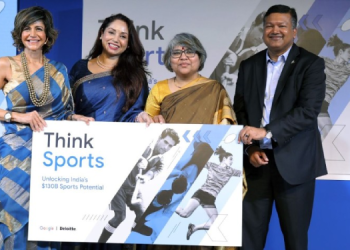A new ‘Don’t Overlook Your Mature Consumers’ report by BCG based on research among 18,000 consumers focused on the 870 million consumers aged 50 to 70 years across 12 markets – Brazil, China, France, Germany, India, Italy, Japan, Spain, Sweden, Thailand, the UK, and the US – that together account for almost half the world’s population.
Across markets surveyed, this segment accounted for 27 pc of the total spending in nine key product categories, while the corresponding number in India was 15 pc (and rapidly growing) and 30 pc in China. The categories covered were: vehicles, health supplements, investments, alcohol, travel, skin care, healthy snacks and apparel.
The report finds that the 50-to-70 segment is much more likely to influence younger consumers than the other way around, across all product categories studies.
This was found to be especially true with regard to big ticket purchases. About 36 pc of younger consumers reported being influenced by mature consumers in their vehicle purchases versus only 15 pc the other way around, and about 31 pc of younger consumers were influenced in their investment choices against 15 pc the other way around. Predictably, when it came to investments, about 31 pc of younger consumers said they were influenced by elders versus 15 pc the other way around.
While the total population of this segment is expected to grow from 870 million today to 1.1 bn in 2050 across the 12 markets, the number is expected to grow from 16 pc in India (223 mn) currently to 25 pc (417.5 mn) by the middle of the century, presenting an even larger opportunity according to the study.

Aparna Bharadwaj, Managing Director and Partner, BCG, who leads the Center for Customer Insight globally and is a co-author of the report, said, “Mature consumers are often ignored by brand marketing, largely because of a number of lingering misconceptions. They are perceived as being price sensitive and reliant on brick-and-mortar stores for their purchases. Nothing could be further from the truth. But marketers fail to recognise their role as trend setters, and they struggle to engage them through conventional marketing techniques.”
Nuanced Approach Needed
The authors state in the report: “Our study shows that brands may struggle to engage mature consumers through conventional marketing techniques. Appealing to this demographic segment requires a far more nuanced approach than simply adjusting the age of models used. We tested several types of advertisements – some with older actors and others with younger actors. Neither approach works well with mature consumers unless the message itself is tailored to their interests and inclinations.”
They surmise that because of mature consumers’ stronger preference for facts, brands should determine what those consumers truly value and relay targeted messages backed by fact.
Across the markets surveyed, mature consumers were found to be active online, with 90 pc using social media platforms daily. Although they appreciate being able to engage live with sales agents, they also value the convenience of using online channels—sometimes even more than their younger counterparts do. In the US, 46 pc of mature consumers purchase apparel online, compared with only 36 pc of the younger demographic, the study finds.

Patrick Witschi, Associate Director, BCG and co-author of the report, added, “Marketers too often underestimate the value that mature consumers bring to a brand, especially the concentrated vibrant mature consumer segment, and as a result they struggle to engage them using conventional marketing techniques. A nuanced approach is needed to win their trust and loyalty, including tailoring messages to their interests and inclinations, providing factual information via direct, personalised interactions, and designing omnichannel purchasing journeys dedicated to them.”

















